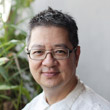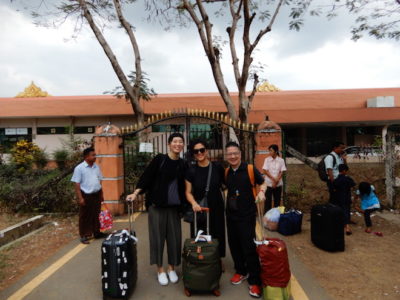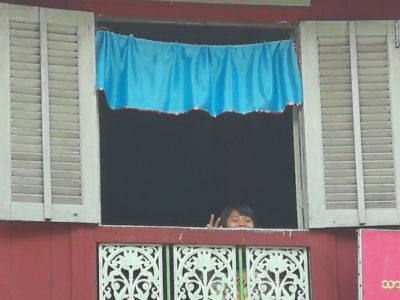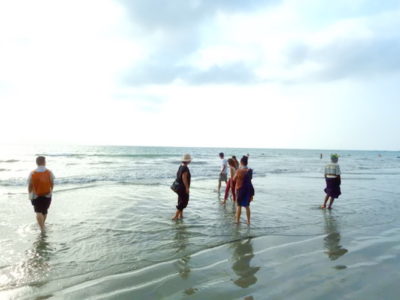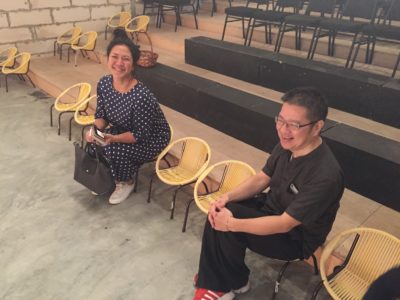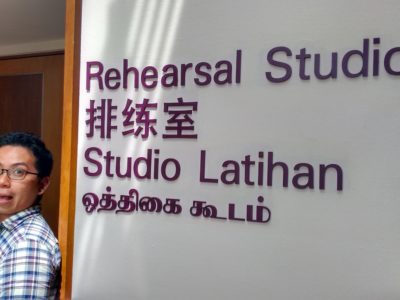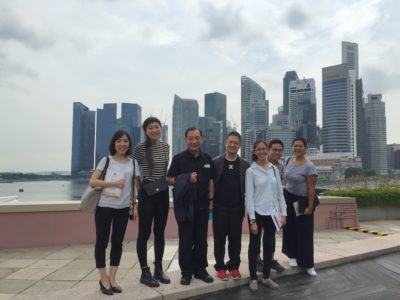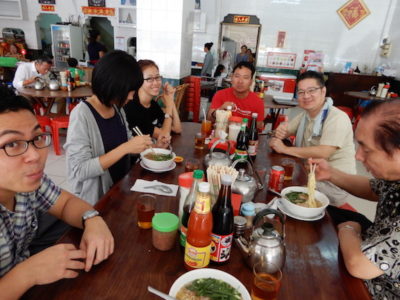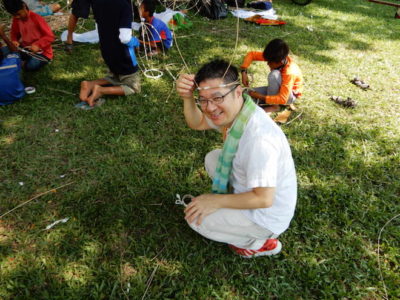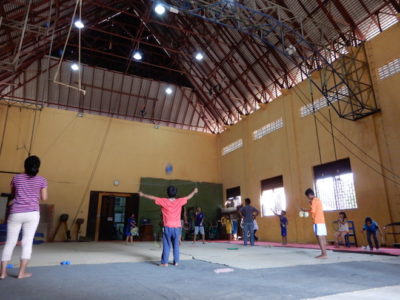Home » Research Visit Reports » Kung Yu Liew
21-23 November 2016
By Mr. Liew Kung Yu & Ms. Koe Gaik Cheng (Malaysia)
Overview & Background
Singapore and Kuala Lumpur were chosen as the research sites for the second phase of Asian TYA Network. We set out to meet the selected TYA practitioners from these two countries to learn about their work and explore further opportunities to expand the network.
This report, however, will mainly focus on the research visit in Singapore from 21 to 23 November 2016.
Over the course of the research visit, we were taken to meet various TYA practitioners and industry players at venues around Singapore: the Esplanade, the Goodman Arts Centre, the Japan Creative Centre, and LASALLE College of the Arts.
Demographics of Singapore
Singapore is a multiracial and multicultural country with ethnic Chinese (76.2% of the resident population), indigenous Malays (15%), and ethnic Indians (7.4%) making up the majority of the population.
Malay is the national language. English is the main working language and is the language used for education in Singapore. The other official languages are Mandarin and Tamil.
Day 1: 21 November 2016, Monday
1pm – Singapore Esplanade
About the Venue: Opened in 2002, Esplanade Theatre is a 60,000 square metres (6.0 ha) performing arts centre located in Marina Bay near the mouth of the Singapore River.
Facilities: Concert Hall (1,800 seats), Performing Arts Theatre (2,000 seats), Recital Studio (245 seats) and a Theatre Studio (200 seats).
People Met:
- Chua Lik Ling (Head of programme management for children and youth)
- Rachel Lim (Programmer)
- Glenda Ng (Programmer)
- Sofia Begum (Programmer)
Key Observations:
- One of the Esplanade’s main offerings is PLAYTIME!, a series of performances for children 2 to 4-year olds that immerses them with sensory elements. Some of the productions are based on storybooks written by local authors. These storybooks normally can be found in PIP’s PLAYBox.
- PIP’s PLAYBox is a children’s activity space within the Esplanade that offers a range of activities from storytelling sessions to self-guided crafts. The space derives its name from the mascot, a character named PIP.
The space is designed primarily to address the needs of young audiences. The space provides facilities for children with special needs, which even includes a separate live-cast viewing area which allows children who are afraid of being in the darkened theatre space to watch the show.
- Feed Your Imagination (F.Y.I) offers primary and secondary school students a series of music, dance and drama performances by established local arts groups. It aims to educate by imparting knowledge about the arts, provoking thought and encouraging audience participation. Each F.Y.I performance includes a tour around the Esplanade.
F.Y.I is held as part of the National Arts Council Arts Education Programme (NAC-AEP) that aims to develop initiatives advocating the value and importance of arts education.
- Both PLAYTIME! And FYI offer resource kits for teachers to prepare students and open up dialogue about the content prior to watching the show. We feel that this is an especially laudable practice as it’s a good way to help youths make sense of difficult issues.
The resource kits and activity packs can be downloaded from the following website: (https://www.esplanade.com/discover-and-learn/learning/2015-resources-for-teachers-and-students)
Day 2: 22 November 2016, Tuesday
10am – NAC Meeting & Goodman Arts Centre
About the Venue: The Goodman Arts Centre is a 7-acre arts hive nestled within the culturally-rich Mountbatten district. Since its establishment in 2011, the center serves as a place to bring artists, enthusiasts and neighboring communities together to experience the arts in a warm and intimate manner.
Facilities: Black Box, Props Making Workshop, Meeting Room, Multi-Purpose Room, Music Studio, Project Studio, Greenfield Modular Studios and an Outdoor Amphitheater.
People Met:
- Kenneth Kwok- Director Arts & Youth and Strategic Planning
National Arts Council
- Aruna Johnson: Deputy Director Of Arts & Youth And Strategic Planning, National Arts Council
- Chua Jia Ling: Senior Manager Of Arts & Youth And Strategic Planning (Pre-School & Kindergarten)
National Arts Council
- Mazlina (Drama) National Arts Council
Key Observations
- National Arts Council endorses TYA programmes that submitted by artists or performing groups under Arts Education Programme (AEP).
- Under the AEP, schools are subsidised with funding to organize trips for students in these shows. This money comes from the Tote Board, a grantmaking organization which operates the Singapore Turf Club and Singapore Pools.
______________________________________________________________
11am – Children’s Art Centre (Goodman Arts Centre)
About the Venue: Set to open in 2017, the Children’s Art Centre is a multi-purpose hall within the Goodman Arts Centre. The CAC will feature indoor and outdoor areas.
Facilities: The indoor area will have a small Theatre Space - a white box that is more approachable to children, Nursing Room, an attached Changing Room for artists, and a Modular Platform that can be used as an exhibition space. The outdoor space will have a Vertical Garden where children can observe the natural ecosystem and urban Edible Garden.
People Met:
- Luanne Poh (Artistic Director)
Key Observations
- The stated aim for the centre is to expose more children to the arts from a young age, especially under privileged groups. Youths from 11 to 15 years old are encourage to be involved in their programmes to gain valuable work experience by volunteering in functional roles (ie reception, usher) at the center.
- Located in a suburban environment away from public transport, the center does not intend to compete with commercial venues. Instead, the center is intended to serve as a creative sandbox venue and platform to seed local artists. As the center is independently funded and essentially offers space for free, it is a good venue for artists to debut their work and test the audience.
- By using learning from nature and outdoor as theme, the Children’s Art Centre will develop a series of creative programmes to encourage children to be curious, and to use art to express that curiosity, and to help make parents understand the value of art to the development of the children.
______________________________________________________________
1.30pm – Japan Creative Centre
About the Venue: Japan Creative Centre (JCC) in Singapore function as a base for disseminating information on Japan's culture and technologies.
Facilities: Multi-purpose Hall (50 seats), an E-Library equipped with computers and audio-visual devices, and an Exhibition Space dedicated to exhibits and displays.
People Met
- Kazunori Matsunaga (Deputy Director of Japan Creative Centre First Secretary)
Key Observations
- The representative briefed us about the various outreach programme organised by the Japan Creative Center and the networking programmes in Singapore, most notably the Singapore International Film Festival, Singapore Writers Festival and Singapore International Festival of Arts.
______________________________________________________________
3pm – Singapore TYA Artists (Goodman Arts Centre)
People Met
- R. Chandran (Artistic Director, ACT 3 Theatrics)
- Catherine Wong (Education Manager, The Theatre Practice)
- Mr Jeffrey Tan (Independent Director/Artist)
- Benjamin Ho (Artistic Director, Paper Monkey Theatre)
- Andy Pang (Assistant Director, Paper Monkey Theatre)
- Chong Tze Chien (Company Director, The Finger Players)
- Ian Loy (Independent Director)
- Ma Gyap Sen (Artistic Director, Young People Performing Arts Ensemble)
- Xiao Jun (Young People Performing Arts Ensemble)
- Brian Saeward (Artistic Director, I Theatre)
- Ruby Lim-Yang (Artistic Director, ACT 3 International)
- Lilian (Company Manager, ACT 3 International)
Key Observations
- The participants discussed various topics around the issue of TYA in Singapore. Some of the key learning points that came up during the conversation were:
- Practitioners should not underestimate the intelligence of young audience as they are capable of understanding more complex issues if we nurture them that way,
- TYA companies should strive to treat the parents and children as a unit of people. In this digital age, it has been observed that parents would treat the theatre like a day care and leave the children to watch while they do other things. As such, companies should strive to create opportunity for them to watch, interact and learn together.
- Most production cannot make profit, need financial support. However, it is acknowledged that the TYA scene in Singapore enjoys a comparatively greater amount of support from government and infrastructure.
- It’s important not to highlight differences but offer children tools to embrace the differences that they’ll have to face in their life.
- ‘Exchanges’ should not just be limited to shows. Rather, there’s a need for skill exchange is equally important which might cost less. eg speech, working with children, education workshop
- A unique situation faced by TYA practitioners is the challenge of producing shows in languages other than English or Mandarin which are endorsed by Singapore’s education system. It was also explained that schools mainly bring students on trips to watch shows to expand their command of the language. Subsequently, if a show is bi-lingual or uses other Chinese dialects, students may not understand the show and it’s hard for the teachers to explain to the principal why they are bringing the students there.
- Sometimes, parents call to ask what the show about cos they don’t understand. To help parents/teachers understand the show and to be able to explain to the children, we prepare information pack and a teacher’s pack.
Day 3: 23 November 2016, Wednesday
11.30am – Singapore TYA Research Meeting (STYAR)
People Met
- Michelle Lim
Key Observations
- Michelle, Caleb and 2 teammates shared Phase 1 of their research on TYA in Singapore which looks at mapping people, places and policies.
- The research also delved into the multicultural background of Singapore, the research will not limit to English language theatre only. Surveys will be conducted by Diploma students (Year 2) from LASELLE to analysis the impact of arts to the recipients of the work.
- The ultimate objective for the research is to help students to understand more about TYA and recognize TYA as an art form.
______________________________________________________________
12.30pm – TYA Education Meeting at LASALLE College of the Arts
People Met
- Dr Amanda Morris (Dean, Faculty of Performing Arts)
- Melissa Quek (Head of School, School of Dance & Theatre)
- Matt Grey (Programme Leader, Diploma in Performance)
Key Observations
- Hisashi Shimoyama, artistic director of ricca-ricca Festa identified Singapore as one of the important centres of Asia, and its potential as a gateway for TYA into South East Asia. It was proposed to hold a TYA symposium with the aim to discuss:
a) What TYA artists can do and should do for the young people in ASEAN
b) The role of artists to develop performances to children for the region and not just own country only.
- One of the main challenges of a performance for the region is language, so it could be either non-verbal or multi-lingual.
Conclusion & Acknowledgements
Despite being a small country and its reputation for a rigid upbringing, Singapore shows great potential as a hub for TYA in the SEA region and is rapidly embracing TYA and its role in nurturing young minds. The practitioners we’ve met are very passionate about what they do, and they have the backing of the Singaporean government and infrastructure to support this work.
This concludes our report. We would like to take this opportunity to extend our gratitude to the following individuals:
- Hisashi Shimoyama & Nao Miyauchi from ricca-ricca festa, & Yumi Sakai from Japan Foundation Asian Centre for making this research visit happen.
- Caleb Lee for coordinating the meetings in Singapore.
- The various TYA practitioners and industry players from Singapore who opened up to share their experience and insights into the Singapore TYA scene with us.
